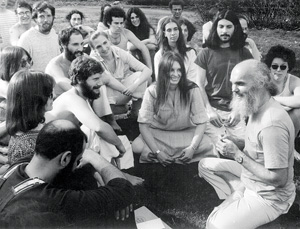JUST WHEN everyone thought the ol’ Timothy Leary spectacle from the drug-addled ’60s had been finally laid to rest, the late psychedelic philosopher returns to the vanguard yet again, thanks to journalist Don Lattin.Based in the East Bay, Lattin has penned a plethora of work on both mainstream and alternative religious movements for 20 years now. His latest book enlightens us with a fine-looking circus of a title: The Harvard Psychedelic Club: How Timothy Leary, Ram Dass, Huston Smith and Andrew Weil Killed the Fifties and Ushered in a New Age for America.
Most people already know the crux of the story: In 1960, Tim Leary and Richard Alpert ran the Harvard Psychedelic Club, a school-sponsored drug-research project. They dosed grad students, professors and religious scholars with a new drug called LSD, which was then legal. They thought it could give people mystical and religious experiences. They even thought it could help cure alcoholism.
Huston Smith, to this day a widely read expert on world religions, took part in the initial experiments, but ultimately went his own way, having no use for the ’60s drug hysteria that Leary helped accelerate. As Leary went on to milk the publicity about LSD in and out of prison, Alpert also eventually bailed from the hoopla, but he went to India and came back as Ram Dass. He is still a world-renowned spiritual guru spending his final days in Hawaii.
The fourth and final title character is none other than Andrew Weil, everyone’s favorite beaded holistic-health honcho. But here’s the part never before told: Weil was an undergraduate working for the Harvard school newspaper when Leary and Alpert first unleashed their drug-research project. Weil wrote the original articles denigrating the two and played a significant role in getting their operation booted out of Harvard. To this day, Dass has never forgiven Weil for what he did.
Neither has Harvard Divinity School graduate and Santa Cruz resident Paul Lee, who also took part in some of the same drug experiments. Lee appears throughout the story, including one scene where he tells the author that Weil is someone he’d like to punch out if he ever sees him:
“[Weil] was a spy for the administration,” Lee says in the book. “He went around interviewing people, including me, then reported it to the administration. I told him things candidly and in confidence, and he betrayed me. He submitted my interview to the authorities. That was dirty pool. He was just out to get fame by doing in Leary and Alpert.”
Instead of austere journalism, Lattin takes a more unfussy and relaxed approach, stipulating upfront that most of the dialogue in the book is his “rendition” of what was actually said in conversations. He claims he re-created the dialogue based on other folks’ memories of what went down.
In any event, the book centers on the supposedly synchronistic arrival of four now-legendary figures at Harvard and how their interrelations provided some of the initial conditions for the large-scale chaos that the ’60s became.
The result is a characteristically nonlinear history, and Lattin tells it the way it should be told, highlighting the interconnections between the nodes and exploring avenues just for the sake of exploring. Lattin reveals that the idea for the book started because he himself was newly sober and needed to do some self-renovation.
“So, in the end, perhaps this book is about me,” he writes. “It might also be about you. It’s the story of four men whose lives provide a kind of master narrative—a template through which some of us may hear our own stories and, in the process, learn a little something about ourselves.”
THE HARVARD PSYCHEDELIC CLUB by Don Lattin; HarperOne; 256 pages; $24.99 hardback
DON LATTIN appears Tuesday (Jan. 26) at 7:30pm at Capitola Book Cafe, 1475 41st Ave., Capitola. The event is free. (831.462.4415)



